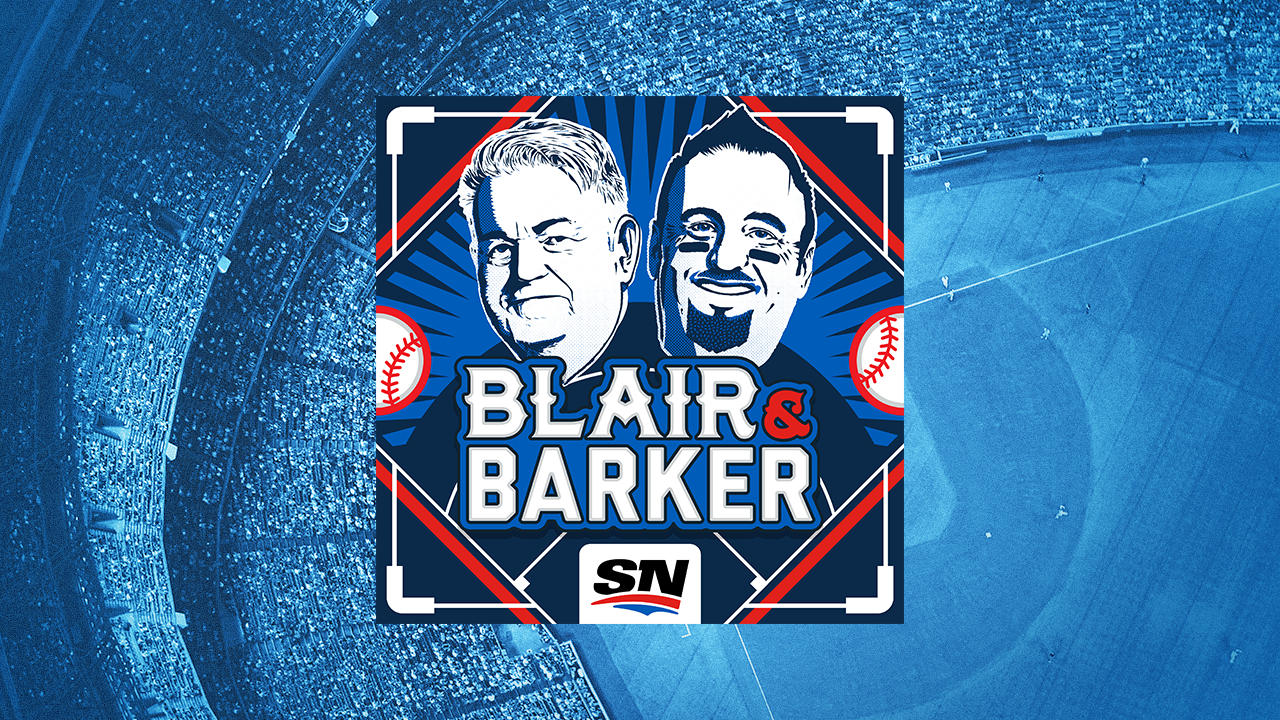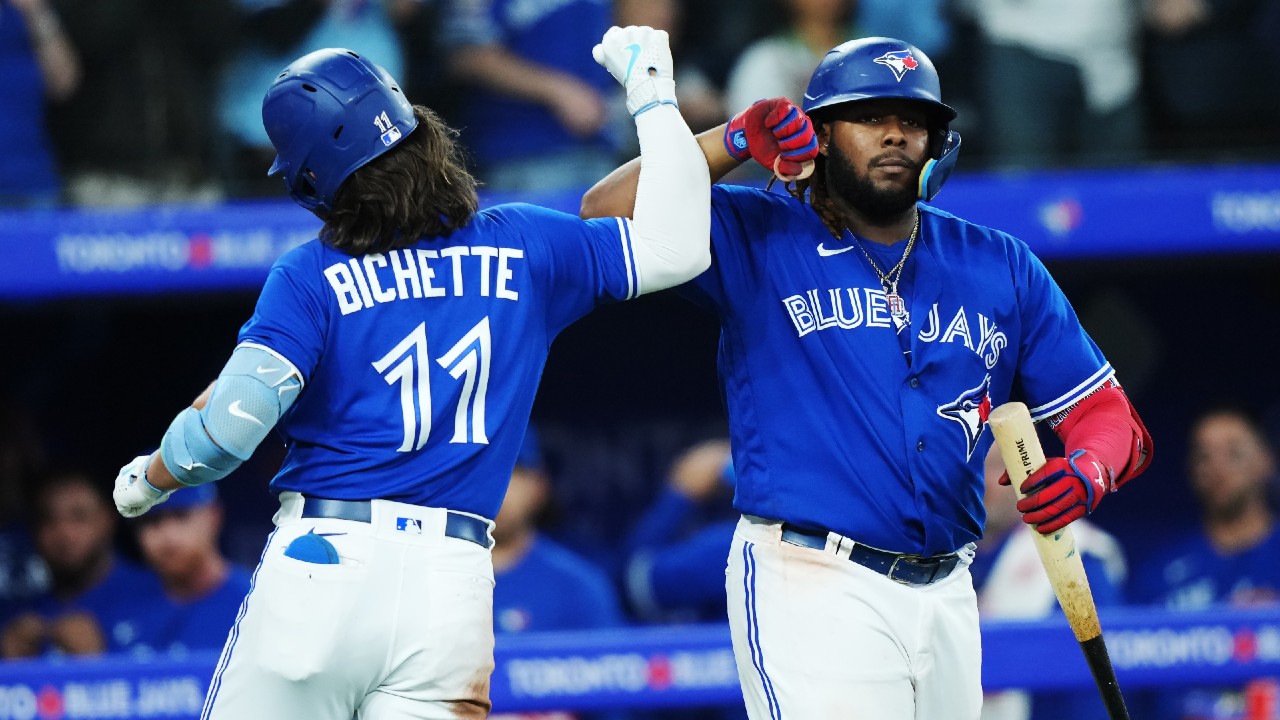Of course, Orelvis Martinez would flunk a PED test. It’s 2024, innit? What’s next? Locusts? The return of Derek Fisher and his “above average run tool?”
Have the Toronto Blue Jays’ post-season aspirations, such as they are, taken (another) hit? Unlikely: despite all the happy talk about Martinez’s defence at triple-A, you’ll hear sotto voce that the marginal offensive gains he would have provided would have come at the expense of considerable defence. Besides, it’s pretty clear that if Leo Jimenez had been healthy, he would have been up here instead. Either one was going back to the minor leagues once Bo Bichette was activated; the Blue Jays told us that by their reluctance to play him.
The Blue Jays have the worst record in the American League in the past 10 games. They are 6.5 games out of the wild-card with five teams between them and the final spot, currently held by the Boston Red Sox – who will play host to the Blue Jays these next three days.
Rather, this will only add to the frustration of a fan base already looking for reasons to pay attention during the summer months. And believe me: that’s not nothing. It’s been noted by the team’s marketing and sales department. But those people don’t make personnel decisions – or, in the case of the Blue Jays, not make them.
Back to Martinez. Leave aside whether there’s legitimacy to the claim that the failed test (for the banned substance clomiphene) was the result of a prescription from a visit to a fertility clinic in the Dominican Republic and that he was told by a doctor that it would not contravene drug-testing rules.
Leave aside that medications with clomiphene as the active ingredient are used to increase ovulation in women, and are only used off-label for men, but as the U.S. Anti-Doping Agency notes on its website: “(it) has also appeared as an undeclared ingredient in black market products sold on the internet for performance-enhancing use.” Just below that is this line: “Under the World Anti-Doping Agency Prohibited list, clomiphene is prohibited at all times.” I mean, that’s on the Google machine. It’s not hard to find.
Sorry. While I have as much empathy as the next person for the immaturity of a 21- or 22-year-old making a bone-headed decision, I have none for any professional athlete failing a drug test established through the collective bargaining process. I understood the lure of PEDS in the days before testing. I, too, marvelled at Mark McGwire and Sammy Sosa and the days of bulging muscles and bulging home run totals. I dug the long ball as much as anyone. Joining the PED pack was an economic decision that I can’t say I wouldn’t have made in similar circumstances. Kind of amoral, I know. But that was an amoral time in MLB.
The equation changed with steroid testing. Other than Hall of Fame voting, what we all thought, suspected, or were comfortable with back then is irrelevant. There is so much education done by clubs and so many points of contact 24/7 between the team, Major League Baseball and MLB Players Association that ignorance is completely indefensible, especially when it comes to off-label usage. If it isn’t a team doctor doing the prescribing, make the damned call or send a text or email.
In a previous existence, I visited former Major Leaguer Rheal Cormier at his home in New Brunswick, where he was preparing to pitch for Canada at the 2008 Beijing Olympics. Cormier, who passed away in 2021, walked me through the drug-testing demands placed on him and all Olympic athletes. He marvelled at the diligence and discipline needed to manage medications and supplements and was, I detected, skeptical that every professional athlete could handle the rigorous nature of it.
This generation of players has grown up with testing and there’s no excuse – none – to fail a drug test. Being suspicious of every powder or drink or pill regardless of your trust in the person handing it to you is a small price to pay for the possible reward.
In this ‘if it’s not one thing, it’s another’ Blue Jays season, it will be tempting to use this as a further example of a front office that is simply incapable of getting out of its way or has pooched yet another area of communication. We’ll hear social media extrapolations that this points to some kind of culture issue, and it is true that there is a pronounced culture issue on this team:
Its hitting culture is abysmal.
But this … yeah, this is on Martinez.
Tripling is tough.
Watching the Cleveland Guardians’ Josh Naylor come within a triple of hitting for the cycle on Sunday – the last Guardians player to do so was Jake Bauers on June 14, 2019 – reminded me of one of my favorite outlier seasons: Curtis Granderson’s 26 triples for the 2007 Detroit Tigers. The MLB record for triples is 36, set by Chief Wilson in 1912 … but the next nine players on the list all played before 1900. Granderson’s is one of just 112 20-triple seasons and of his contemporaries, only Jimmy Rollins (2007) and Cristian Guzman (2000) hit that figure. Before them? You need to go to George Brett, who hit 20 in 1979.
In fact, of the 51 other players with 22 or more triples, 47 managed the feat before 1928. So, keep an eye on the Boston Red Sox’s Jarren Duran when the Blue Jays open a three-game series at Fenway Park on Monday. Duran already has 10 triples; last year just two players (Bobby, Witt, Jr., and Corbin Carroll) managed to hit double digits, with 11 and 10, respectively.
Here come the Yankees …
This was the week that Gerrit Cole stuck his 100-m.p.h. fastball into the AL East race and, well, let’s light a candle, shall we?
Cole’s next start is scheduled for Tuesday, which puts him in the picture to start Sunday’s series finale against the Blue Jays at the Rogers Centre.
The Yankees had a streak of 76 games in which their starter logged at least four innings snapped last Wednesday when Luis Gil was chased after 1 1/3 innings in a 17-5 loss to the Baltimore Orioles. That was a franchise record and the seventh longest streak in Major League history.
The Chicago Orphans’ 146-start streak in 1900 is the record, but somewhat surprisingly there are three other lengthy streaks since 2006, when the Chicago White Sox had an 89-start streak.
The Philadelphia Phillies’ 108-start streak in 2014 was the best recent run, while the Arizona Diamondbacks’ 102-start streak in 2017 was close behind.
It’s not necessarily a harbinger of post-season success, as that Phillies team finished fifth in the NL East, the Diamondbacks finished second and were swept in the NLDS, and the White Sox finished third in the AL Central.
And then there were two …
The death of Willie Mays has reduced to two the number of living players to have played in the official Negro Leagues.
One of those is Ron Teasley, who had seven at-bats for the New York Cubans of the Negro National League II in 1948. Soon to turn 98, Teasley was one of several Negro Leaguers to play in the Man-Dak independent League, hitting .299 for the Carman Goldeyes.
Carman, Man. is a town of 3,000 located 40 minutes southwest of Winnipeg, and the Man-Dak League was a going concern for years after the official Negro Leagues ran into financial difficulty. Satchel Paige, among others, played in the league.
Say Hey. Every day.
Loved having Negro Leagues Museum president Bob Kendrick on our show to talk about Mays’ legacy. As Kendrick points out, it is justifiable to wonder what Mays’ career numbers would have been without having his career interrupted at the ages of 21 and 22 because of military service.
I’m with Kendrick: I think Mays would have had a shot at being the career home run leader if he’d played those two full seasons. Mays hit 51 homers in his first year back from the military and 41 a year later and finished with 660.
I can’t think of Mays, either, without remembering his former teammate Felipe Alou noting that he played centre field “back in the days when it really was a field in centre field.” Mays played his home games at the Polo Grounds for six seasons. Centre field was 450 feet from home plate.
He then played in Seals Field when the team moved to San Francisco (410 feet in the team’s first year, 400 the next) and Candlestick Park (420) before finishing his career at Shea Stadium (410). Only two current stadiums have larger centre fields than 410: Coors Field (415) and Comerica Park (412.) There are two players I wish I’d seen play in their prime: Joe DiMaggio and Mays.
Dumbing down the discourse
I hate the ‘Who is the greatest living Major Leaguer?’ argument because the pace of change in the majors makes it difficult to compare players from the late 2000s to present-day, never mind guys who played in the 1970s and 1980s.
Still, if you’re one of those uncomfortable with the obvious statistical answer – Barry Bonds – or Pete Rose’s status or are led blindly by WAR, then I think the argument needs to include Rickey Henderson, Mike Schmidt, George Brett, Ken Griffey, Jr., … and Shohei Ohtani. Me? I have no difficulty saying it’s Bonds.
Jeff Blair hosts Blair & Barker from 2-4 p.m. ET on Sportsnet 590 The Fan and Sportsnet. Blair & Barker also host Blue Jays Talk following Blue Jays weekday games.
from Sportsnet.ca
via i9bet



No comments:
Post a Comment